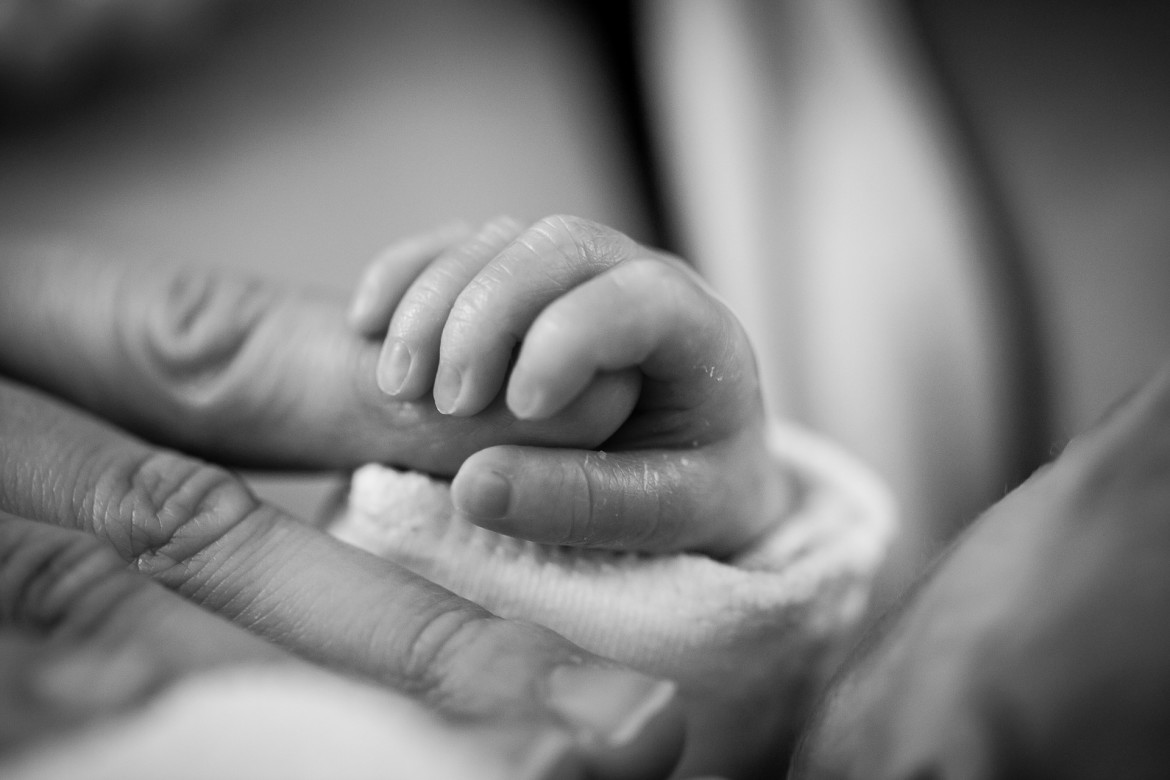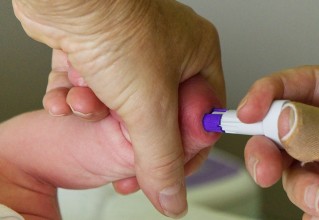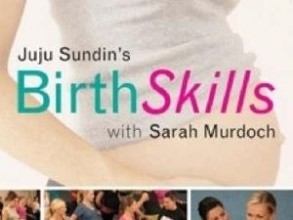How to give birth to a breech baby vaginally?
12 Oct, 2019A baby is usually positioned with its head facing the birth canal, however in some situations it is in a breech presentation, which is when the baby’s bottom or legs are facing the vagina. This happens in 3 - 4% of pregnancies that are full term. Babies who are in breech or transverse at 37 weeks may still turn to be vertex presentation at the time of birth. However, there are some things that can be done to encourage the baby to turn, if not, it is usually possible to deliver a baby vaginally in the breech position.
Types of breech presentation
There are three main types of breech presentation:
the complete breech where the baby is curled up with thighs and knees flexed in a fetal position
The incomplete or Frank position which is where the baby’s feet are up touching the head and hands are wrapped around the legs.
The Footling breech - this is rare. In this position, one or both feet present first, or even more rarely, a knee comes out first.
Having said that, there is still more variation in terms of position of breech presentation in relation to the mother’s pelvis. This is comparing where the baby’s tailbone is to the mother’s pelvis. There are 8 possible positions depending on which way the baby is facing and these are described using the latin terminology e.g. Sacrum anterior, left sacrum anterior, left sacrum transverse etc.
Natural ways to encourage the breech baby to turn
The tilt position - from the 8th month if the baby still has not turned, then lay on your back with your knees up, bent at the knee, with feet flat on the floor with a few pillows under the bum. Ina May writes in Spiritual Midwifery that in one study, 89% of babies turned from breech to vertex position using this technique, without a need for version.
Knee to chest position - this is almost the opposite as above. Kneel on the floor with your bum up in the air, and head and shoulders on the ground. This position will give your baby more room to move around, but be careful not to let your thighs press into your bump.
Other websites I’ve seen suggest Moxibustion which is a chinese traditional medicine using moxa sticks to turn breech babies. I would do my own research on this though and go to a qualified certified acupuncturist. I haven’t been able to find any studies myself on the benefits of this. This cochrane article https://www.cochrane.org/CD003928/PREG_cephalic-version-by-moxibustion-for-breech-presentation comments that there is limited evidence to confirm that moxibustion can turn breech babies but it gathers evidence from 8 trials. It also suggests that there is some evidence to show that moxibustion combined with acupuncture can result in fewer c-section births.
The External Cephalic Version (ECV) Manoeuvre
The Version of the baby which is rotating the baby’s position whilst in the womb should be performed very carefully by the midwife. An ECV can be performed in the last few weeks when the midwife examines the baby’s position. They will be able to feel the baby’s head and arms, including the soft fontanels on the baby’s skull to tell which way it is facing. If the baby is in a breech position, the midwife can use both hands to move the baby and rotate it so it is head first, using one hand to keep the pressure and hold the baby while the other hand moves to the next hold to rotate. However take care to ensure the baby is not engaged in the pelvic cavity.
Causes for breech presentation
According to Ina May Gaskin in Spiritual Midwifery, these are the potential causes for breech presentations:
Small or premature baby
Lots of amniotic fluid
Multiple pregnancy
Placenta previa
Contracted pelvis
Uterine tumors
Hydrocephalus
Large baby
Stages of Breech Delivery
When birthing birth to a breech baby, there are three stages. First the bum and legs, then the shoulders and arms, and finally the head.
First the baby’s legs or bottom descend into cervix as the cervix thins and dilates. It is engaged when the widest part of the baby’s hips move into the pelvic cavity. The baby may come out legs first, feet first, or bottom first. It is quite rare for a baby to come out knees first. The baby may rotate as it comes out moving into the best position for delivery, slipping and sliding through the pelvic cavity. It is not quite as efficient as the head though, so may take longer for dilation to happen. Each side of the bum might be born one after the other to allow for this wide part of the hips to come through.
Next the midwife will hold the baby’s body, putting her hand under the chest, and the shoulders will be born one after the other. The shoulders will descend and rotate so that they can be born one after the other. The midwife should lift the bay’s body upwards so that the forward shoulder and arm can come out, and then lower the body so that the back shoulder and arm can come out. Or you can do this in the opposite order depending on how the baby is positioned.
Finally the head will be born. The babys head will flex so that its chin rests on its chest and the face will turn so its face down towards mum’s tailbone. At this point the midwife supporting the baby’s body will find the baby’s body also rotates and this should happen naturally, so that the neck does not break. The chin, face and huge baby skull will pass through the birth canal.
The baby could be born spontaneously, or need assistance, or the midwife may need to extract the baby if it is stuck.
If the baby is stuck at the arms the midwife will need to support its body, turn it 90 degrees, taking care not to turn it too much so the neck could break, and sweep two fingers over the arm and shoulders, bending the arm at the elbow to bring it out. If the baby is stuck at the shoulders then rotate the baby clockwise and anti-clockwise, allowing it to descend with each move and giving it the room to wriggle out. If the head is stuck, traction should be used to pull the baby out, but in some cases forceps may need to be used to avoid injury to the spinal cord and neck.
The midwife can also assist in the birth by placing pressure on the fundus (the top of the uterus above the bump), supporting the mothers taint so it does not tear, taking care to deliver the head slowly so it does not tear the perineum.
Potential problems in a Breech Delivery
Ina May gaskin suggests in Spiritual Midwifery that the additional risks during a breech delivery include:
Prolapse of the umbilical cord (this means the cord handing out in the cervix or passing through the vagina. In a vertex birth, the head doesn’t leave much of a gap for the cord to come through so there is less of a risk of this happening. Ina May states that in a breech delivery, prolapse of the cord occurs in 4 - 5% of breech deliveries, which is ten times what it usually is for vertex deliveries.
Other problems include squashing of the umbilical cord. In a breech delivery the body is already outside the mum with the head still inside. By the time the head comes out, the baby may be ready to be breathing on its own and a squashed cord could cause hypoxia for the baby. This is when the baby is deprived of oxygen.
The head could also be difficult to birth as the cervix may have been large enough for the body to go through, but not the head. Additionally, the head has less time to mold during a breech delivery than a vertex delivery.
The rarest and most difficult position to deliver a breech baby is when the baby is back to back, that is, the baby is facing towards its mum’s belly-button and coming out legs first. In this position the baby’s head can get stuck as their chin could get stuck at the pubic bone. Ina May suggests a large episiotomy will be required to get the baby’s head out. If rotation is not possible, raise the baby’s body up, to deliver the head.
Research and Studies
https://blogs.biomedcentral.com/bmcseriesblog/2018/11/09/breech-birth-at-home-a-new-study-of-safety-outcomes/ This particular medicale blog is by an obstetrician who left the hospital to start a home birth practice and suggests that in the United States the only way to have a Vaginal Breech Birth is at home as hospitals have banned them. He states that it is professionally irresponsible not to offer women a vaginal breech birth considering the higher risks for a c-section.
https://www.ncbi.nlm.nih.gov/pmc/articles/PMC5719268/ Another study in Cameroon found that it is safer for women to have a vaginal cephalic delivery rather than a vaginal breech birth, and that while a vaginal breech birth should still be an option that is offered to women, this will need close monitoring through labour which may not be feasible in many poorer countries.
https://bmjopen.bmj.com/content/7/4/e014979 another article comparing Vaginal Breech birth and Vaginal Cephalic Birth with risks of neo-natal mortality and cerebral palsy.
What I could not find though was a study comparing risks for mother and baby in a c-section compared with vaginal breech birth. This particular article https://www.rcog.org.uk/en/news/rcog-statement-advice-on-nutrition-in-pregnancy/bjog-release-caesarean-birth-safest-for-breech-delivery-but-the-absolute-risks-of-vaginal-delivery-remain-small/ does compare the risks but only for the baby. Although it states that a planned c-section is safest for a breech delivery (compared with vaginal breech delivery) the absolute risks are low. But what about for mums? What are the risks of a c-section to the mother compared with a vaginal breech birth?
Great to see some research out there on these issues but we have a long way to go. I hope this has given you some useful information on vaginal breech deliveries and makes you feel more confident on having on if you are in that position.
cover image by SephH from Pixabay
Get The Best Of Sleepy Roo Delivered To Your Inbox
Subscribe to my newsletter and get the latest info on baby sleep! You can unsubscribe at any time.



